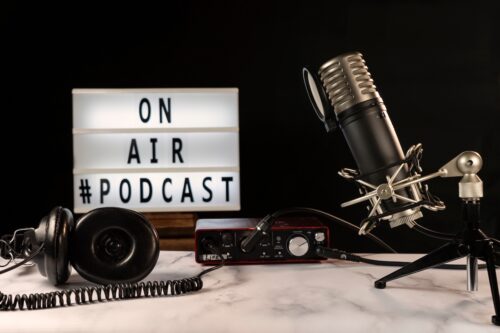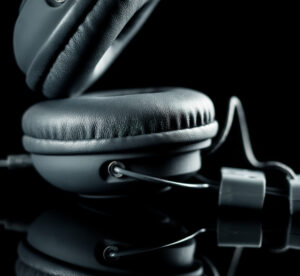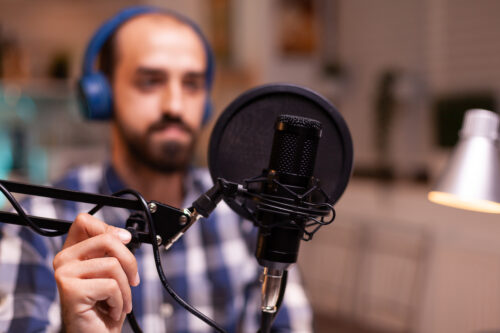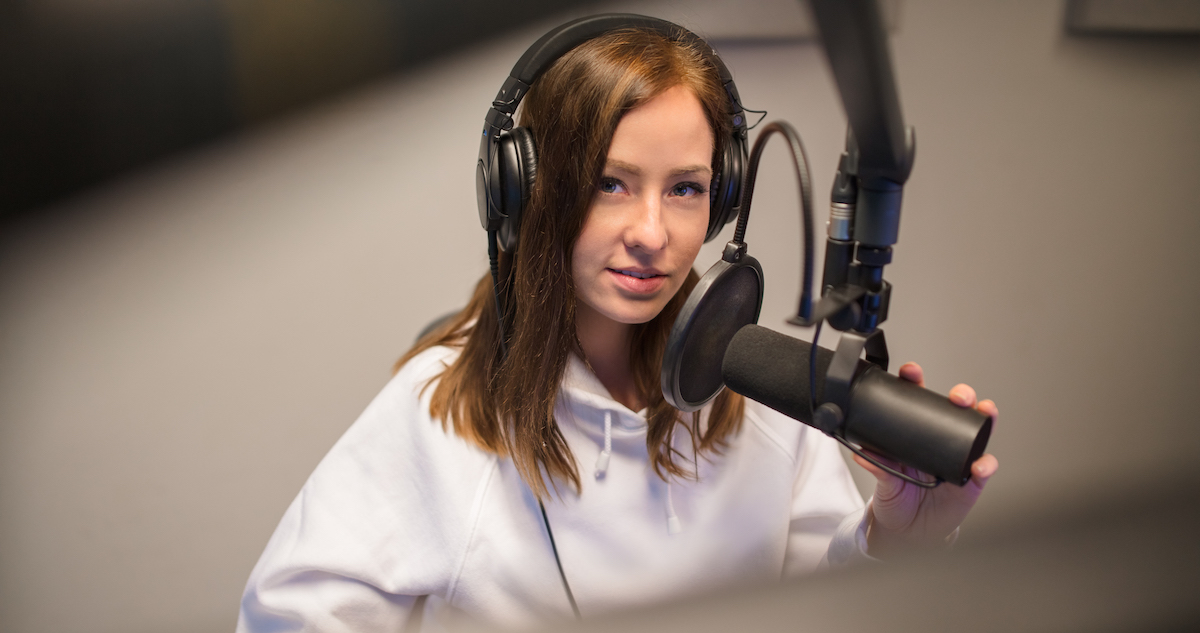If you haven’t already taken a look at this article or this one, please do; both are a worthwhile read before tackling one about the tools you need to podcast at your best in 2021.

Sure, the viral tsunami that was 2020’s COVID-19 has spilled over into 2021 in no uncertain terms, but that doesn’t mean we can’t pick ourselves up, brush ourselves off, and start 2021 in a winning frame of mind! It’s about finding solutions.
To get and keep your business’s service offerings top-of-mind, the burgeoning popularity of podcasting is proof of how well you can make it work.
Of course, to enable solutions, you need the right tools.
Podcasting can seem like a big project, but like any big project, all it takes is dissection and planning, and it’ll unfold like a beautiful blueprint. Here are the tools you need to podcast at your best in 2021:
The checklist
You can consider this article to be a checklist. You can’t get far on your camping trip if you don’t pack the necessary provisions. God forbid you forget the granola snacks, no?
So to start off, we’ll consider the most essential tool in podcasting: the microphone.
The microphone
A podcast is going to be primarily audio, and you’re likely going to want to keep your audience’s attention for a while. So the audio has to be in tip-top shape. No seriously. The better your podcast sounds, the more likely your listeners will keep listening. In the end, it won’t matter how great your content is; if your podcasts audio quality sucks, it’s game over.
No matter what anyone tells you, it’s in your best interest to invest in a good mic. Your earbud mic or your phone mic just won’t cut it. Instead, you’ll want to pick up an XLR mic.

XLR or USB?
“Hold on a sec, what about USB mics?” you may be asking.
While USB mic quality has improved significantly over the past few years, we’d still like to argue that you consider an XLR mic. At Voice123, it follows by implication that we get to speak with voice actors a lot. When it comes to recording quality, microphones are a frequent topic. Professional mics are always XLR.
USB mics, because of their wiring, are more susceptible to noise generated from the electronics. It can sound like a low-level hiss, buzz, hum, or a whine. It’s the nature of the beast. XLR mics use separate, detachable cables. It allows them to produce a cleaner sound.
Remember that your podcast will require your listeners to listen for a period of time. While a background noise may not be an issue at first, it will definitely become an issue the longer one listens. Like with most things in life, it’s better to address the cause of the problem rather than the symptoms, so avoid a USB mic.
Cost and versatility
Now here’s the caveat; a lot of folks will argue in favor of USB mics because of their versatility and especially price point. USB functionality means it’s easily portable, plug-in-and-play, and cheaper.
XLR mics, because of their 3-prong connectors, need to plug in to an audio interface, which adds to the cost and difficulty of taking your podcast on the road. However, an audio interface does allow for recording with multiple mics. Recording with multiple USB mics on the other hand, is “doable, but far from optimal.”
If you’ve decided you’d first like to test the water before diving into a bigger spend on equipment, by all means – try a USB mic. Just don’t forget that you can only make a great first impression once…
Grab a durable boom arm to set up your mic, and you’re ready to record!
Headphones – or ‘cans’

There’s not much to say here, but a good set of headphones that’ll let you hear the smallest details of a recording are an absolute must.
After all, you wouldn’t want to record something and publish it for broadcast when your recording is riddled with heavy breathing and background noise you couldn’t hear over speakers. Invest in a good pair of headphones; there are a wide range out there and they don’t need to cost the earth either!
Recording in progress!
Your equipment is good to go, let’s talk about recording. Assuming you’re calling people you don’t live with, and are practicing social distancing, you’ll likely be calling using an online service.
We can assume everyone’s familiar with Zoom — did you know Zoom usage had a 30-fold increase during the pandemic? Wow.
Skype is also an option, and equal to Zoom depending on who you ask. Both offer free recording. But if you’re looking to record for longer than 40 minutes on Zoom, you’ll have to upgrade your account.
If you’re past these services, you can consider using paid services dedicated to podcasting. Some of them come with neat tools like transcription and analytics, which can really make your podcasting life easier.
You’ll also want to look into editing software that’s right for you. A staple audio-editing software for many is the free program, Audacity. It’s not the most illustrious tool, but it’ll do the same job as the premium Adobe Audition, albeit via a slower and perhaps more inconvenient working process.
A voiceover?

When people think about creating a podcast, hiring a professional voice actor doesn’t usually cross one’s mind. But a pro voice over can do wonders for your podcast!
A professional voice over can bring the emotion and the hook that’ll draw in your audience. That’ll help you keep up with the ever-rising sonic branding that companies are using.
That’s a load of tools, but once you pick them all up, you’re ready to rock your podcast. We wish you every success using the tools you need to podcast at your best in 2021!






